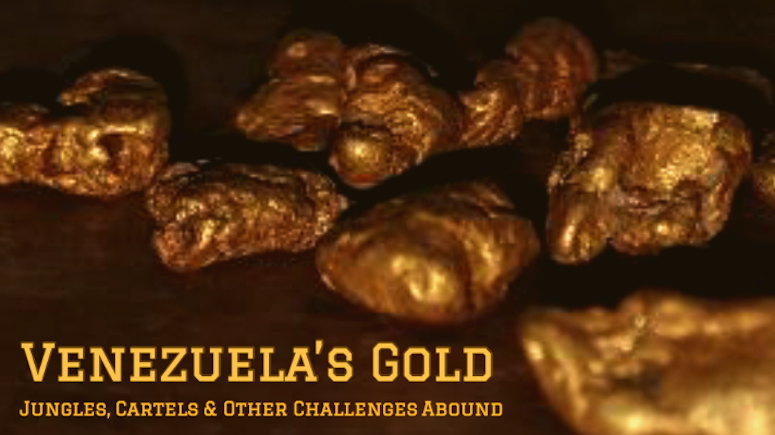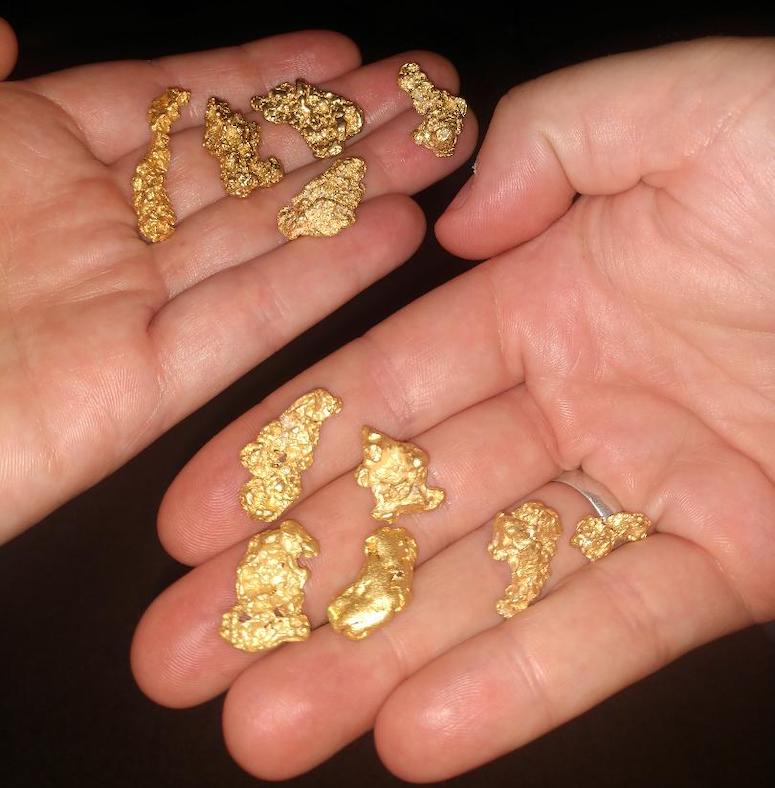
If you’re a gold prospector or even an enthusiast, then this topic should interest you. Why? Venezuela is believed to have the largest gold reserve on the South American Continent. Only a fraction of it has been mined.
Experts are fairly certain of the locations that house the majority of the gold deposits in the country. The Guyana Shield – part of the Amazonian Shield which is over 3.5 billion years old – that spreads through several countries contains large deposits of the yellow metal. These are parts of the country that are close to Brazil and Guyana.
In addition, much of the placer gold is found near the river banks of Venezuela. Gold prospectors and miners have extracted placer gold from the banks of Caroni and Paragi Rivers. Both Venezuela and Brazil share these two rivers. In fact, mining operations have yielded a considerable amount of gold in the southeastern region of the country.
Several gold deposits were discovered in the mid-1800s in the Guiana Highlands. Although record-keeping in the 19th Century Venezuela was very difficult, it’s claimed that the discoveries made over 150 years ago lead to the production of 30 million ounces of the yellow metal in that region.
Factors That Make Gold Prospecting and Mining Difficult in Venezuela
Venezuela is not a very hospitable place to go gold prospecting or small-scale mining. While one of the major reasons for that is a challenging environment. Several gold-bearing areas are situated in thick forests, which are infested with deadly animals, mosquitoes, and diseases.
That said; illegal mining is rampant in many parts of the country. For example; El Callao – a town in the southeastern part of Venezuela – is known for its gold mining. Most of the mining activity in the town is illegal carried out by dangerous groups. It would be quite dangerous for anyone to try gold prospecting in the rivers and streams that run through the town.
Venezuela hasn’t established itself as a major gold producer in spite of having massive gold deposits because the mining policy and regulatory framework has hampered the growth of the mining industry.

Major Gold Mining Projects in Venezuela
One of the biggest mining companies operating in Venezuela is Rusoro Mining. It operates two of the largest gold producing mines in the country – Choco 10 mine and Isidora mine.
The Choco 10 mine was earlier managed by Goldfield. It was later taken over by Rusoro Mining, which now has a 95% stake in the mine.
The Isidora mine is jointly owned by the Rusoro Mining Company and the Venezuelan Government.
Both these mines yield high grade ore with around 100,000 ounces of the yellow metal production per year. These mines are located in the El Callao in the southeastern region of the country.
The possibility of finding more gold in and around these two mines had prompted Rusoro Mining to take up ten other projects in the same region. This involves the exploration of gold and development work in the El Callao district.
Another major mine situated in the same district in the Bolivar state is the CVG Minerven mine. Currently managed as a joint venture by the government and a private company CVG, the mine became operational in 1970 and nationalized in the year 1974.
The best known and the biggest mine in Venezuela was the Placer Dome mine. Located at Las Cristinas, the mine was, like other mines and major businesses in the country, a partnership venture managed by Corporation Venezolana de Guyana (CVG) and the Venezuelan Industrial and Mining. Tough mining laws and legal trouble lead to the dissolution of the partnership and the closure of the mine in 1999.
The Problem of Illegal Mining in Venezuela
Illegal mining is rampant in Venezuela. As mentioned earlier, most gold deposits are found in thick forest areas far from cities. Mining activities here are mainly run by outlaws and smugglers who extract gold and move them to neighboring countries to escape the taxes imposed by the government.
Most of the mines in the country were partially nationalized. They were managed as joint ventures. To curb illegal mining, the Hugo Chavez government fully nationalized the gold industry in the year 2011.
The move proved counterproductive. Instead of reducing illegal mining, the nationalization seriously affected the gold mining industry.
The large scale illegal mining happening in Venezuela is not only eating into the revenue that the government is supposed to earn, it’s becoming a major health and environmental hazard.
Unregulated illegal mining is resulting in large scale deforestation. The chemicals used in extracting gold, especially mercury, are poisoning the rivers and the groundwater. Water stagnation as the result of gold extraction from placer deposits has become breeding grounds for malaria-infested mosquitoes.
Venezuela is home to unimaginable riches. If the government could find solutions to the many challenges and problems that are affecting the gold industry, in the near future, Venezuela could become one of the top five gold producing countries in the world. This would be a great boon for a country facing such extreme economic challenges.
Mining in Bolivia | Expect Growth as Gold Prices Rise
Huge Gold Reserves in Central America
How Suction Dredges find Placer Gold
